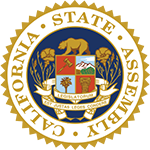SACRAMENTO (BRAIN) — Gov. Gavin Newsom signed several e-bike bills into law at the end of September, including one that specifically defines what the state considers to be an e-bike in an effort to address concerns about throttle-powered bikes.
SB 1271 was signed into law on Sept. 27 and also establishes e-mobility device and battery third-party testing standards like UL 2849 and EN 15194. The bills were sent to Newsom at the end of August.
California's definition of Class 1 and 3 electric bikes will now include the phrase "is not capable of exclusively propelling the bicycle." This means that Class 1 (20 mph max assist) and Class 3 (28 mph max assist) e-bikes with both throttle- and pedal-assist would no longer be within the definition of "electric bicycle."
The legislation states, "A 'class 2 electric bicycle,' or 'low-speed throttle-assisted electric bicycle,' is a bicycle equipped with a motor that may be used exclusively to propel the bicycle, and that is not capable of providing assistance when the bicycle reaches the speed of 20 miles per hour. ... A class 1 or class 3 electric bicycle may have start assistance or a walk mode that propels the electric bicycle on motor power alone, up to a maximum speed of 3.7 miles per hour."
Federal regulations generally define e-bikes as having operable pedals with a maximum motor power of 750 watts and top speed on motor power alone of 20 mph. Some manufacturers offer models with both throttle- and pedal-assist features that can function as more than one of the three classes originally created by PeopleForBikes and adopted in 43 states. SB 1271 does not change the Class 2 definition and electric bikes that have only a throttle-actuated motor providing assistance until the bike reaches 20 mph would still be labeled as such. The existing definition would also allow a Class 2 electric bike to have pedal-assist up to 20 mph, but it would need to be labeled and sold as a "Class 2" electric bike because of the throttle.
Under the new definition, you could not have a "Class 1" or "Class 3" electric bike that has a throttle, because it doesn't meet the class definition. You could have a Class 2 throttle bike that also has pedal assist (that is not prohibited) but it would need to be labeled as a Class 2 electric bicycle due to the throttle.
Two other e-bike bills signed into law will establish pilot programs for San Diego (AB 2234) and Marin (AB 1778) counties requiring anyone over 12 without a valid driver's license to take an online e-bike safety training course and pass a written traffic safety test. Those without a valid driver's license must have a state-issued ID in order to operate an e-bike.
Also signed was SB 960, which will enhance the mandate of the California Department of
Transportation to improve state roads for all users when performing maintenance projects. The California Bicycle Coalition says it is "a huge victory for advocates of safer streets and active transportation access."




